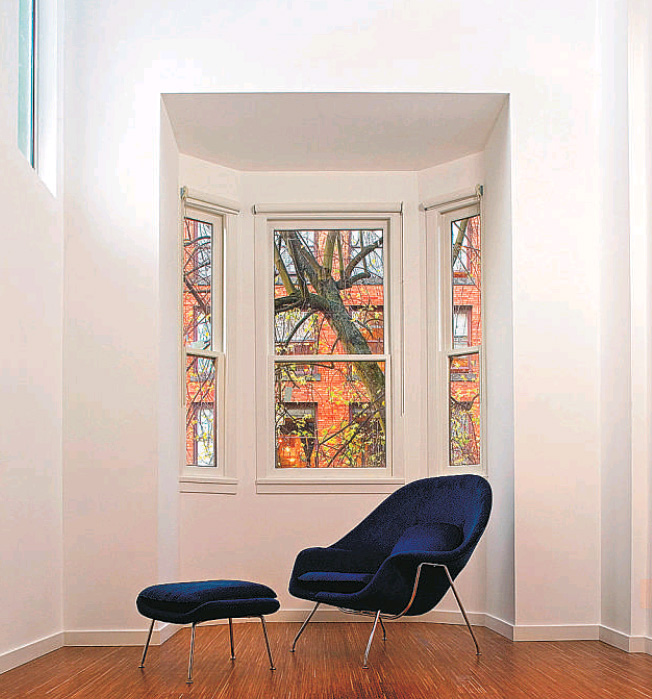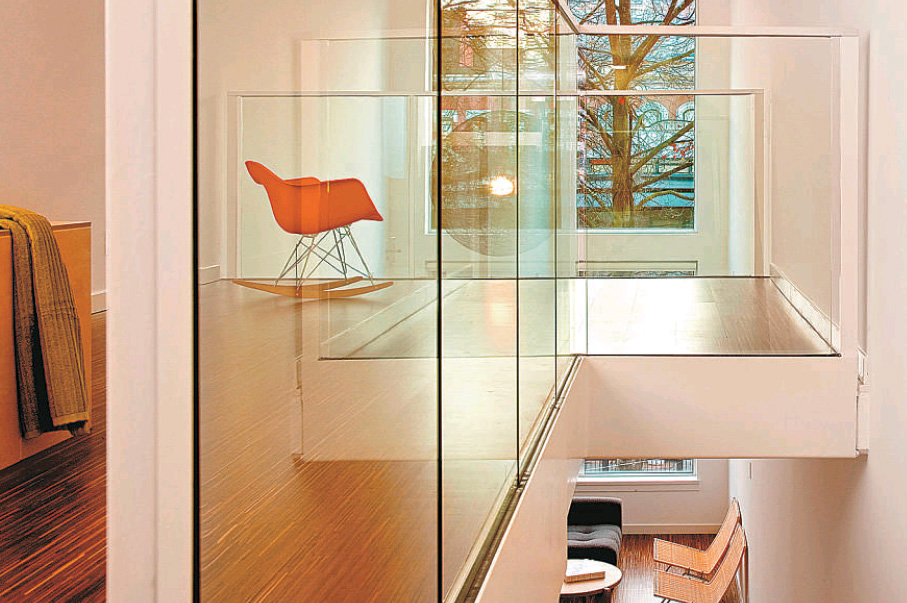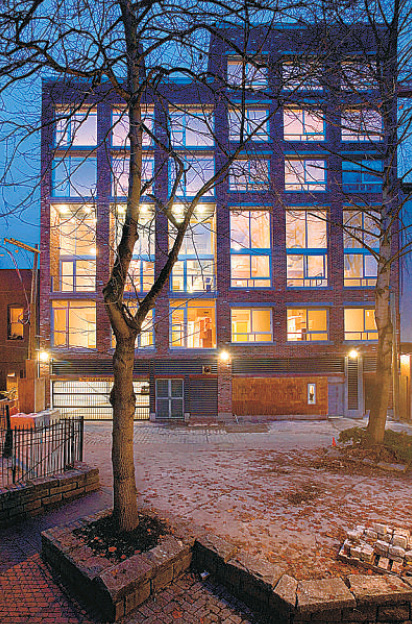Latest Gastown households move in to homes that are intensely modern spaces behind a serenely Victorian facade
Michael Sasges
Sun

photographs, by Nic Lehoux, from the rear, or Blood Alley side, of the completed Terminus new-home project

Vancouver’s Gastown neighbourhood, interior and exterior



The Terminus hotel, for example, was built in 1889. The Stanley and New Fountain hotels across the alley were built in 1907
In our homes, by our comparative novelty culturally, the opportunity to juxtapose old and new, later century and earlier, one design period and another, is limited — the pairing, for example, of a mid-century modern Womb chair and ottoman with the restored bay window of a Victorian railway hotel framing an Edwardian warehouse.
That’s why it’s a pleasure to show you photographs from the recently completed Terminus new-home project on Water Street in Vancouver‘s Gastown neighbourhood.
The 46 Terminus households will reside in spaces ranging in size from 623 square feet to 1,624 square feet.
They are now moving in.
The developer is The Salient Group; the architect, Acton Ostry, and the interior designer, Evoke International Design Inc.
Acton Ostry commissioned most of the photography published here and inside, for inclusion in submissions to architectural competitions.
The firm’s assignment to Vancouver photographer Nic Lehoux, Mark Ostry says, was “Capture the sculptural character of complex spaces.”
The Terminus homes envelop their occupants in innovative, sustainable design, behind old-as-they-get Gastown facades. (The restored bay windows in the front-of-building homes were installed almost 110 years ago.) The homes are heated and cooled geo-thermally.
They are emphatically linear, their outside walls equally boundaries between households and canvases for tempering the linearity with European kitchens and bathrooms and artful millwork.
The adjacent Terminus and Grand hotels are lending their facades to the new Terminus building.
The former was destroyed by fire in 1998, with only its Water Street facade saved. The latter was neglected for years and had been largely demolished, the exception its Water Street facade.
The households moving into the Terminus received a memorable housewarming gift last week: a mention of their new homes in the Wall Street Journal newspaper.
CITY HALL’S HERITAGE INCENTIVES HELPED PUT NEW HOMES IN OLD BUILDING
The Terminus developer, Robert Fung of the Salient Group, is worried about the opportunity to do another Terminus.
‘With the City [of Vancouver] putting its heritage-incentive program under review, I’m concerned that projects like the Terminus may – repeat, may – not happen again.
‘The value to the buyer in these projects is unparalleled. Due to the heritage incentives assisting in the cost, the developer is able to sell the suites at less than what they cost to build. In this case, homebuyers truly get much more than they paid for.’
The heritage-preservation incentives that city hall now is reviewing were passed by previous councils ‘to facilitate the conservation and rehabilitation of heritage buildings’ in the Vancouver’s first neighbourhoods, Gastown, Chinatown, Victory Square and Hastings Street between Cambie Street and Heatley Avenue, a city hall report says.
THERE WERE THREE PARTS TO THE PROGRAM:
– Grants to the owners of heritage properties to improve their properties’ exteriors.
– Property-tax exemptions.
– Sellable density.
”A frequently used incentive is granting of bonus density in exchange for the rehabilitation and legal protection of a heritage building,” a city hall primer on this incentive says.
‘When it is not possible to use this bonus density by adding more development on the same site as the heritage building, council or the Development Permit Board may authorize it to be made available for transfer to another site where there is opportunity for additional development.
‘The sale of transferable heritage density generates funds for the owner of the heritage site; this helps defray rehabilitation costs.’
Salient sold out the Terminus in June, 2006, but some buyers have decided not to close. (No news there these days!)
A RECENT HISTORY
Blood Alley’s history is more recent than many of the structures that back on to it.
The Terminus hotel, for example, was built in 1889. The Stanley and New Fountain hotels across the alley were built in 1907.
Blood Alley, however, was created in the middle 1970s. In the words of one city hall document, the “significant public realm improvements” done then “included the brick and granite pavement and planters [and] lighting treatment.”
When built, the Stanley and the
New Fountain were separate hotels, but were combined, again in the 1970s, as housing for the destitute and impoverished.
The City of Vancouver now owns the combined buildings. The Portland Hotel Society manages them.
© Copyright (c) The Vancouver Sun
